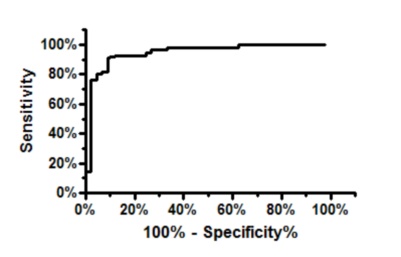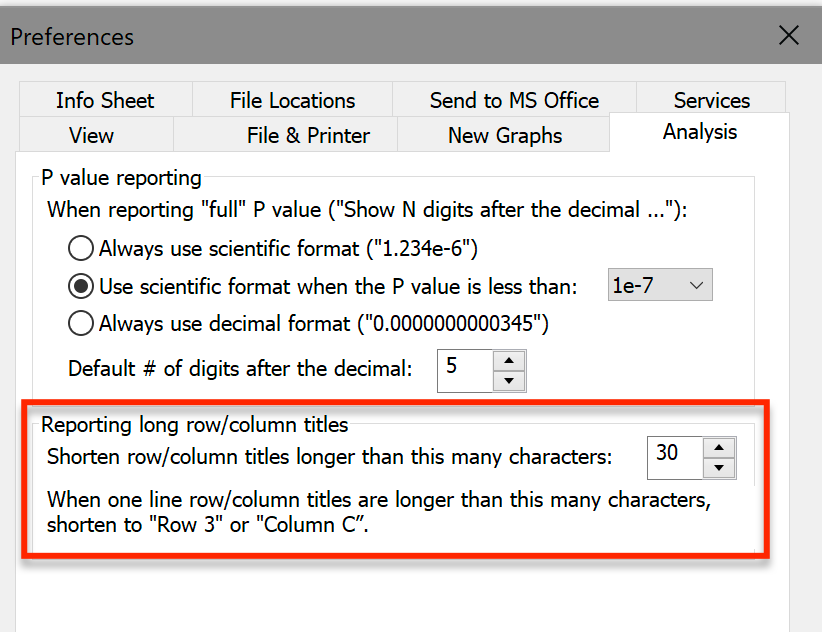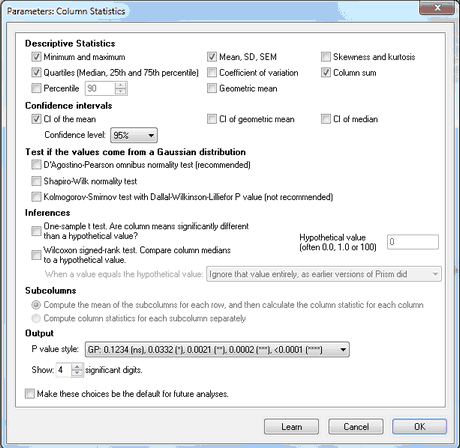

P Royston, Remark AS R94: A Remark on Algorithm AS 181: The W-test for Normality. In case you encounter any discrepancies, you should know that we fixed a bug in this test many years ago in Prism 4.01 and 4.0b.ġ. Since that method is only accurate with small P values, Prism simply reports “P>0.10” for large P values. To compute the P value, therefore, Prism uses the Dallal and Wilkinson approximation to Lilliefors' method (3). You only know the mean and SD of your sample. When analyzing data, you rarely know the overall population mean and SD.

The Kolmogorov-Smirnov method as originally published assumes that you know the mean and SD of the overall population (perhaps from prior work). The distinction is that Anderson-Darling considers the discrepancies at all parts of the curve, and Kolmogorov-Smirnov only look at the largest discrepancy. Note that both this test and the Anderson-Darline test compare the actual and ideal cumulative distributions. This is not a very sensitive way to assess normality, and we now agree with this statement 1 : " The Kolmogorov-Smirnov test is only a historical curiosity. It computes a P value from a single value: the largest discrepancy between the cumulative distribution of the data and a cumulative Gaussian distribution. We still offer this test (for consistency) but no longer recommend it. Prism uses the method of Royston (1).Įarlier versions of Prism offered only the Kolmogorov-Smirnov test. There are several ways to compute the Shapiro-Wilk test. The other reason is that the basis of the test is hard to understand. One reason is that, while the Shapiro-Wilk test works very well if every value is unique, it does not work as well when several values are identical. We prefer the D'Agostino-Pearson test for two reasons. It takes into account the discrepancies at all parts of the cumulative distribution curve (unlike the Kolmogorov-Smirnov test, see below).Īnother alternative is the Shapiro-Wilk normality test. It computes the P value by comparing the cumulative distribution of your data set against the ideal cumulative distribution of a Gaussian distribution. The one used by Prism is the "omnibus K2" test.Īn alternative is the Anderson-Darling test. Note that D'Agostino developed several normality tests.

It is a versatile and powerful normality test, and is recommended. It then calculates how far each of these values differs from the value expected with a Gaussian distribution, and computes a single P value from the sum of these discrepancies. It first computes the skewness and kurtosis to quantify how far the distribution is from Gaussian in terms of asymmetry and shape. We recommend the D'Agostino-Pearson normality test. Why is there more than one way to test normality? There are many ways a distribution can deviate from a Gaussian distribution, so different normality tests give different results. Therefore, we identified a new regulating factor for FASLG function within T cells and also revealed a new pathway for ALG2 involvement in T cell apoptosis.Prism offers four normality tests. In this report, ALG2, a molecule identified in the T cell apoptosis and shown to be involved in vesicle trafficking previously, was found to interact with FASLG and regulate FASLG transportation. Following synthesis, FASLG is transported by intracellular vesicle transportation system to the final destination. The correct localization, either on the plasma membrane or secreted with exosome, or shed into the extracellular region after protease cleavage, has a great impact on the proper function of FASLG. The N-terminal cytosolic region, despite short and intrinsically disordered, plays critical roles on the protein stability and transportation. FASLG is a type II transmembrane protein, with its C-terminal extracellular domain responsible for interacting with FAS. FASLG, by interacting with its cognate receptor FAS, plays a major role in controlling the T cell death.

Following pathogen clearance, most of proliferated T cells will be eliminated by the apoptosis pathway to keep the balance of immune cells. In the immune system, T lymphocytes undergo rapid clonal expansion upon pathogen infection.


 0 kommentar(er)
0 kommentar(er)
